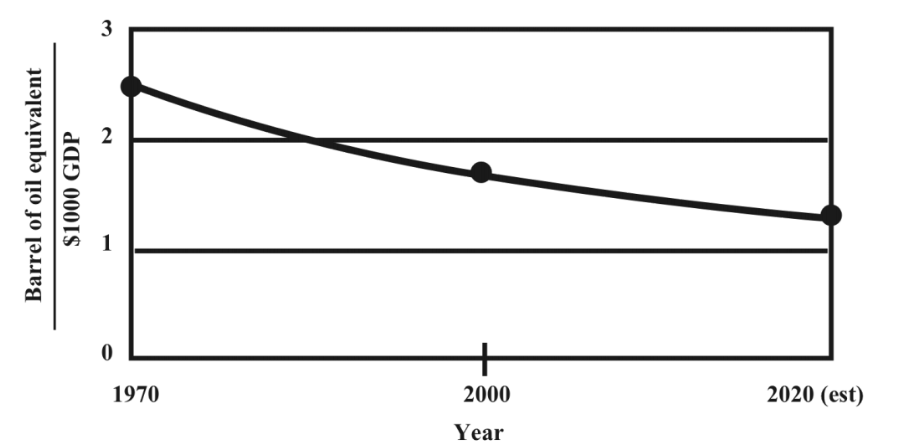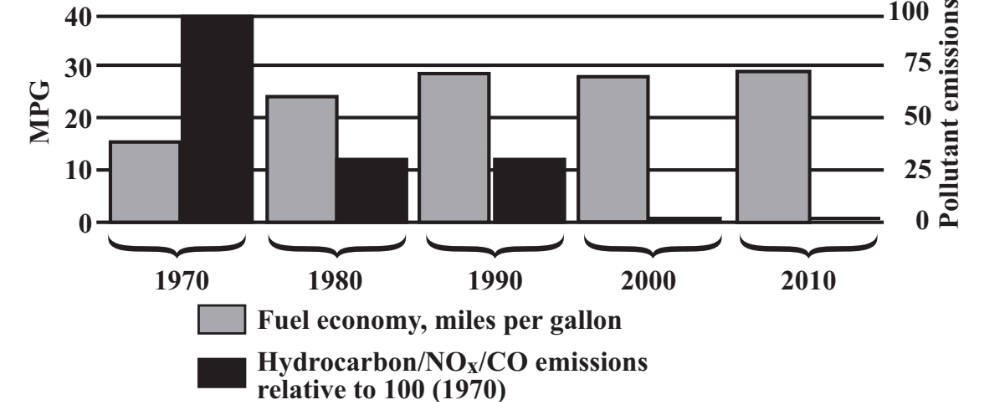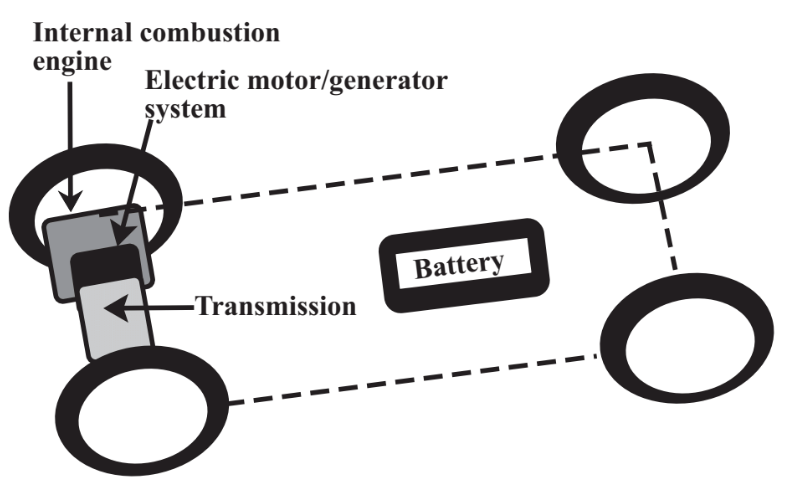15.7: Energy Conservation
- Page ID
- 285395
\( \newcommand{\vecs}[1]{\overset { \scriptstyle \rightharpoonup} {\mathbf{#1}} } \)
\( \newcommand{\vecd}[1]{\overset{-\!-\!\rightharpoonup}{\vphantom{a}\smash {#1}}} \)
\( \newcommand{\id}{\mathrm{id}}\) \( \newcommand{\Span}{\mathrm{span}}\)
( \newcommand{\kernel}{\mathrm{null}\,}\) \( \newcommand{\range}{\mathrm{range}\,}\)
\( \newcommand{\RealPart}{\mathrm{Re}}\) \( \newcommand{\ImaginaryPart}{\mathrm{Im}}\)
\( \newcommand{\Argument}{\mathrm{Arg}}\) \( \newcommand{\norm}[1]{\| #1 \|}\)
\( \newcommand{\inner}[2]{\langle #1, #2 \rangle}\)
\( \newcommand{\Span}{\mathrm{span}}\)
\( \newcommand{\id}{\mathrm{id}}\)
\( \newcommand{\Span}{\mathrm{span}}\)
\( \newcommand{\kernel}{\mathrm{null}\,}\)
\( \newcommand{\range}{\mathrm{range}\,}\)
\( \newcommand{\RealPart}{\mathrm{Re}}\)
\( \newcommand{\ImaginaryPart}{\mathrm{Im}}\)
\( \newcommand{\Argument}{\mathrm{Arg}}\)
\( \newcommand{\norm}[1]{\| #1 \|}\)
\( \newcommand{\inner}[2]{\langle #1, #2 \rangle}\)
\( \newcommand{\Span}{\mathrm{span}}\) \( \newcommand{\AA}{\unicode[.8,0]{x212B}}\)
\( \newcommand{\vectorA}[1]{\vec{#1}} % arrow\)
\( \newcommand{\vectorAt}[1]{\vec{\text{#1}}} % arrow\)
\( \newcommand{\vectorB}[1]{\overset { \scriptstyle \rightharpoonup} {\mathbf{#1}} } \)
\( \newcommand{\vectorC}[1]{\textbf{#1}} \)
\( \newcommand{\vectorD}[1]{\overrightarrow{#1}} \)
\( \newcommand{\vectorDt}[1]{\overrightarrow{\text{#1}}} \)
\( \newcommand{\vectE}[1]{\overset{-\!-\!\rightharpoonup}{\vphantom{a}\smash{\mathbf {#1}}}} \)
\( \newcommand{\vecs}[1]{\overset { \scriptstyle \rightharpoonup} {\mathbf{#1}} } \)
\( \newcommand{\vecd}[1]{\overset{-\!-\!\rightharpoonup}{\vphantom{a}\smash {#1}}} \)
\(\newcommand{\avec}{\mathbf a}\) \(\newcommand{\bvec}{\mathbf b}\) \(\newcommand{\cvec}{\mathbf c}\) \(\newcommand{\dvec}{\mathbf d}\) \(\newcommand{\dtil}{\widetilde{\mathbf d}}\) \(\newcommand{\evec}{\mathbf e}\) \(\newcommand{\fvec}{\mathbf f}\) \(\newcommand{\nvec}{\mathbf n}\) \(\newcommand{\pvec}{\mathbf p}\) \(\newcommand{\qvec}{\mathbf q}\) \(\newcommand{\svec}{\mathbf s}\) \(\newcommand{\tvec}{\mathbf t}\) \(\newcommand{\uvec}{\mathbf u}\) \(\newcommand{\vvec}{\mathbf v}\) \(\newcommand{\wvec}{\mathbf w}\) \(\newcommand{\xvec}{\mathbf x}\) \(\newcommand{\yvec}{\mathbf y}\) \(\newcommand{\zvec}{\mathbf z}\) \(\newcommand{\rvec}{\mathbf r}\) \(\newcommand{\mvec}{\mathbf m}\) \(\newcommand{\zerovec}{\mathbf 0}\) \(\newcommand{\onevec}{\mathbf 1}\) \(\newcommand{\real}{\mathbb R}\) \(\newcommand{\twovec}[2]{\left[\begin{array}{r}#1 \\ #2 \end{array}\right]}\) \(\newcommand{\ctwovec}[2]{\left[\begin{array}{c}#1 \\ #2 \end{array}\right]}\) \(\newcommand{\threevec}[3]{\left[\begin{array}{r}#1 \\ #2 \\ #3 \end{array}\right]}\) \(\newcommand{\cthreevec}[3]{\left[\begin{array}{c}#1 \\ #2 \\ #3 \end{array}\right]}\) \(\newcommand{\fourvec}[4]{\left[\begin{array}{r}#1 \\ #2 \\ #3 \\ #4 \end{array}\right]}\) \(\newcommand{\cfourvec}[4]{\left[\begin{array}{c}#1 \\ #2 \\ #3 \\ #4 \end{array}\right]}\) \(\newcommand{\fivevec}[5]{\left[\begin{array}{r}#1 \\ #2 \\ #3 \\ #4 \\ #5 \\ \end{array}\right]}\) \(\newcommand{\cfivevec}[5]{\left[\begin{array}{c}#1 \\ #2 \\ #3 \\ #4 \\ #5 \\ \end{array}\right]}\) \(\newcommand{\mattwo}[4]{\left[\begin{array}{rr}#1 \amp #2 \\ #3 \amp #4 \\ \end{array}\right]}\) \(\newcommand{\laspan}[1]{\text{Span}\{#1\}}\) \(\newcommand{\bcal}{\cal B}\) \(\newcommand{\ccal}{\cal C}\) \(\newcommand{\scal}{\cal S}\) \(\newcommand{\wcal}{\cal W}\) \(\newcommand{\ecal}{\cal E}\) \(\newcommand{\coords}[2]{\left\{#1\right\}_{#2}}\) \(\newcommand{\gray}[1]{\color{gray}{#1}}\) \(\newcommand{\lgray}[1]{\color{lightgray}{#1}}\) \(\newcommand{\rank}{\operatorname{rank}}\) \(\newcommand{\row}{\text{Row}}\) \(\newcommand{\col}{\text{Col}}\) \(\renewcommand{\row}{\text{Row}}\) \(\newcommand{\nul}{\text{Nul}}\) \(\newcommand{\var}{\text{Var}}\) \(\newcommand{\corr}{\text{corr}}\) \(\newcommand{\len}[1]{\left|#1\right|}\) \(\newcommand{\bbar}{\overline{\bvec}}\) \(\newcommand{\bhat}{\widehat{\bvec}}\) \(\newcommand{\bperp}{\bvec^\perp}\) \(\newcommand{\xhat}{\widehat{\xvec}}\) \(\newcommand{\vhat}{\widehat{\vvec}}\) \(\newcommand{\uhat}{\widehat{\uvec}}\) \(\newcommand{\what}{\widehat{\wvec}}\) \(\newcommand{\Sighat}{\widehat{\Sigma}}\) \(\newcommand{\lt}{<}\) \(\newcommand{\gt}{>}\) \(\newcommand{\amp}{&}\) \(\definecolor{fillinmathshade}{gray}{0.9}\)Particularly with the development of an automobile-based economy and society, energy has been wasted to a shocking extent in the U.S. and some other industrialized nations. This points to the opportunity afforded by energy conservation as the most effective means of providing adequate energy. The potential for energy conservation is illustrated by the fact that some nations that have living standards near or even exceeding those of the U.S. have much lower energy consumption per capita.
On a positive note, energy use in the U.S. fell 5% to 94.6 quadrillion British thermal units (BTU) in 2009 from 99.2 quadrillion BTU in 2008, the largest year-to-year drop since the U.S.government started keeping track of energy consumption in 1949. Declines were registered in residential, commercial, industrial, and transportation sectors. Although much of the decline was due to a sharp decrease in economic activity, a significant portion was due to more energy-efficient appliances, automobiles, and other energy-consuming devices. The year also showed a significant increase in renewable wind, solar, and hydro power sources.
As illustrated in Figure 15.8, increases in the efficiency of energy utilization can contribute favorably to higher economic standards. This plot shows past and realistic future estimates of trends of the ratio of energy use per unit of gross domestic product reflecting a steady decrease in energy required per unit of economic output. Furthermore, well developed economies are more efficient users of energy. For the year 2000, the production of $1000 of gross domestic product in developed nations required 1.7 barrels of oil equivalents compared to 5.2 barrels for nations with less developed economies that lack means to utilize energy efficiently. This indicates that as the economies of less industrially advanced nations evolve with energy conservation as a top priority significant economic development with reduced energy consumption can be achieved. This kind of development combined with more efficient energy utilization in developed nations including measures such as smaller, more fuel efficient dwellings and vehicles can make a major favorable impact on energy demand.

Although household and commercial uses of energy are relatively efficient they present significant potential for increased energy efficiency. Considering the energy wasted in generating electricity, the all-electric home requires much more energy than one heated directly with fossil fuels. A compactly constructed home (more in the shape of a cube with a full basement) uses significantly less energy than a rambling “ranch style” house constructed on a slab. Apartments and row houses are much more energy-efficient than free-standing homes. Measures such as increased insulation and sealing around windows can save fuel. Waste heat from centrally located electrical power plants can be used for commercial and residential heating and cooling. With proper pollution control, these plants can use municipal refuse for a significant fraction of their fuel thereby reducing quantities of solid wastes requiring disposal.
Saving Energy in the Transportation Sector
The economic sector with the greatest potential for increased energy efficiency is transportation. Private automobiles and commercial aircraft are only about one-third as efficient as trains and buses in moving people. Movement of freight by truck requires 5-6 times as much energy as transport by train. Furthermore, electrified railways are much better adapted to using renewable sources of energy than are private automobiles. trucks, and aircraft.
As illustrated in Figure 15.9, U.S. automobile fuel economy increased impressively from the first “energy crisis” of the 1970s until about 1990. This was achieved along with much lower emissions of exhaust pollutants. Unfortunately, the trend toward better fuel economy, which, if continued would have meant average mileage figures of at least 40 miles per gallon (MPG) by 2010, stopped moving up with increased popularity of outsized vehicles, especially the “sport utility vehicle” type. In 2007 the U.S. Congress passed legislation mandating improved fuel economy for automobiles sold in the U.S. An average of 40 MPG is readily achievable without significantly compromising safety and comfort and has the added benefit of substantially reduced emissions of greenhouse gas carbon dioxide.
Hybrid vehicles that are propelled by an electric motor connected to a battery rechargeable with a small internal combustion engine now deliver impressive fuel economy (Figure 15.10). The improvement is especially pronounced for stop-and-go driving in traffic where at least 50% better mileage figures have been achieved. In operation, the main battery in the vehicle, which is much larger than a conventional automobile battery, but smaller than one required for an all-electric vehicle, is kept charged by the onboard internal combustion engine coupled to a generator. A contribution is also made by regenerative braking that generates electricity during braking. When the vehicle is slowing, coasting downhill, or stopped, the internal combustion engine turns off, which saves fuel.


Until recently the battery of choice for hybrid vehicles has been the nickel-metal-hydride battery. As of 2010, development was actively underway on hybrid vehicles using lithium ion batteries, which hold a relatively greater charge per unit mass. These batteries can be charged from an external source of electricity providing 40-50 km of driving range before the onboard internal combustion engine has to engage. Charging the battery from an external source is much less expensive than using an internal combustion engine affording rather spectacular fuel economy.
The ultimate in fuel economy could be achieved with an externally rechargeable hybrid vehicle using a diesel engine for onboard recharging. The highly efficient diesel engine, which idles on remarkably little fuel, could be left running at a steady rate for relatively long periods of time, staying hot and greatly reducing emissions, which are highest for a diesel engine during startup, shutdown, and abrupt changes in engine speed.
A natural gas (methane) fueled engine could be an excellent choice for a hybrid vehicle. With recent developments in the exploitation of abundant shale sources of natural gas, this fuel has become readily available in a number of countries including the U.S. A big advantage with methane is that it is a very low pollutant fuel. A limitation with a natural gas engine is the relatively low cruising range. But, coupled with an externally rechargeable battery in a hybrid vehicle, a natural gas engine could provide impressive range and fuel economy. The economy could be further enhanced using stratified charge ignition in which the fuel is injected directly onto the spark plug enabling extremely efficient combustion with a very lean overall fuel/air mixture.2


